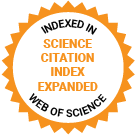Journal of Medical Internet Research
The leading peer-reviewed journal for digital medicine and health and health care in the internet age.
Editor-in-Chief:
Gunther Eysenbach, MD, MPH, FACMI, Founding Editor and Publisher; Adjunct Professor, School of Health Information Science, University of Victoria, Canada
Impact Factor 5.8 CiteScore 14.4
Recent Articles

Metabolic syndrome is a cluster of metabolic abnormalities, including obesity, hypertension, dyslipidemia, and insulin resistance, that significantly increase the risk of cardiovascular disease (CVD) and other chronic conditions. Its global prevalence is rising, particularly in aging and urban populations. Traditional screening methods rely on laboratory tests and specialized assessments, which may not be readily accessible in routine primary care and community settings. Limited resources, time constraints, and inconsistent screening practices hinder early identification and intervention. Developing a noninvasive and scalable predictive model could enhance accessibility and improve early detection.


There is a growing amount of evidence suggesting high rates of co-occurring internet addiction (IA) symptoms and psychological distress in youth. However, the extent to which IA symptoms develop over time, how they interact with psychological distress symptoms dynamically, and how they predict one another remain unclear. Additionally, what specific types of distress, including depression, anxiety, and stress, are more closely associated with IA symptoms remains inconclusive.

In the 21st century, health care has been going through a paradigm shift called digital health. Due to major advances and breakthroughs in information technologies, most recently artificial intelligence, the patriarchy of the doctor-patient relationship has started evolving toward an equal-level partnership with initial signs of patient autonomy. Being an underused resource for centuries, patients have started to contribute to their care with information, data, insights, preferences, and knowledge. It is important to recognize that at its core, digital health represents a cultural transformation, where patient empowerment has likely played the most significant role in driving these changes. This viewpoint paper traces the remarkable journey of patient empowerment from its nascent stages to its current prominence in shaping health care’s future. Spanning over two and a half decades, we explore pivotal moments and technological advancements that have revolutionized the patient’s role in health care. We dive into a few historical milestones, mainly in the United States, that have challenged and redefined societal norms around agency, drawing parallels between patient empowerment and broader social movements, such as the women’s suffrage and civil rights movements. Through these lenses, we argue that patient empowerment is not solely a function of knowledge or technology but requires a fundamental shift in societal attitudes, policies, health care culture, and practices. As we look to the future, we posit that the continued empowerment of patients will play a pivotal role in the development of more equitable, effective, and personalized health care systems. This paper calls for an ongoing commitment to fostering environments that support patient agency, access to resources, and the realization of patient potential in navigating and contributing to their health outcomes with an emphasis on the emerging significance of patient design.

Large language models (LLMs) are transforming how data is used, including within the health care sector. However, frameworks including the Unified Theory of Acceptance and Use of Technology highlight the importance of understanding the factors that influence technology use for successful implementation.


The global surge in mental health challenges has placed unprecedented strain on health care systems, highlighting the need for scalable interventions to promote mental health self-care. Chatbots have emerged as promising tools by providing accessible, evidence-based support. While chatbots have shown promise in delivering mental health interventions, most studies have only focused on clinical populations and symptom reduction, leaving a critical gap in understanding their preventive potential for self-care and mental health literacy in the general population.

Patient-centered clinical decision support (PC CDS) exists on a continuum that reflects the degree to which its knowledge base, data, delivery, and use focus on patient needs and experiences. A new focus on value-based, whole-person care has resulted in broader development of PC CDS technologies, yet there is limited information on how to measure their performance and effectiveness. To address these gaps, there is a need for more measurement guidance to assess PC CDS interventions.

Perinatal depression and anxiety significantly impact maternal and infant health, potentially leading to severe outcomes like preterm birth and suicide. Aboriginal women, despite their resilience, face elevated risks due to the long-term effects of colonization and cultural disruption. The Baby Coming You Ready (BCYR) model of care, centered on a digitized, holistic, strengths-based assessment, was co-designed to address these challenges. The successful BCYR pilot demonstrated its ability to replace traditional risk-based screens. However, some health professionals still overrely on psychological risk scores, often overlooking the contextual circumstances of Aboriginal mothers, their cultural strengths, and mitigating protective factors. This highlights the need for new tools to improve clinical decision-making.

The COVID-19 pandemic has been accompanied by an “infodemic,” where the rapid spread of misinformation has exacerbated public health challenges. Traditional fact-checking methods, though effective, are time-consuming and resource-intensive, limiting their ability to combat misinformation at scale. Large language models (LLMs) such as GPT-4 offer a more scalable solution, but their susceptibility to generating hallucinations—plausible yet incorrect information—compromises their reliability.
Preprints Open for Peer-Review
Open Peer Review Period:
-
Open Peer Review Period:
-
Open Peer Review Period:
-
Open Peer Review Period:
-
Open Peer Review Period:
-


















